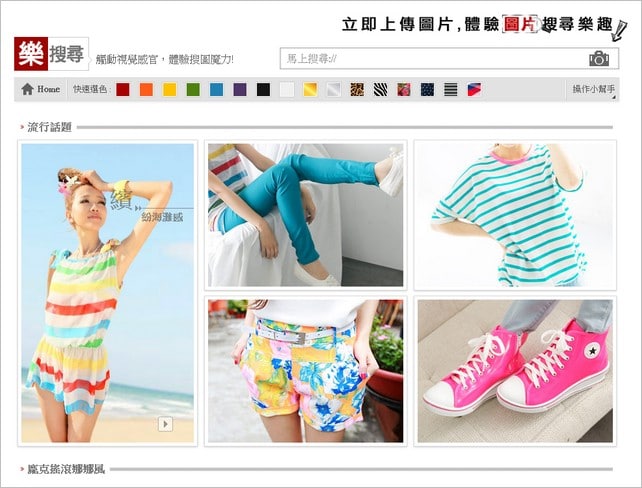The importance of on site search for your ecommerce business
01/07/14
3'
On site search can often be over looked by online retailers in favour of SEM and SEO. Although it is important to make your site searchable externally, it is also valuable to know how it is being searched internally.
Internal site search can provide valuable analytic information: most popular products, potential new products and you can use site search results to help you with your SEO. Effective site search means better site usability for the customer, as they can quickly and easily find what they want. This translates not only into higher conversion rates, but increased site usage and better loyalty, as customers know they can find products they want easily.
Evolution of on site search
On site search has come on leaps and bounds since the early days. Originally a customer would type a word or sentence and the results would come back based on few criteria and gave no opportunities for upselling or cross selling. Amazon became one of the first companies to really take advantage of site search through their recommendation engine, which permitted them to offer results based on a database of past results. Thus, companies could offer additional results such as “customers who searched for this, also liked this…” Now filters, such as size, colour and style allow speedy site searches in a few clicks.
Auto complete, where suggestions appear as you type your search query, has also greatly improved site search. The suggestions can be based on recent or most searched results or come from the site’s database of products and product descriptions.
One of the latest developments in site search is visual search. Visual search is aimed at visitors who are just browsing. Visitors who search are more likely to make a purchase because they looking for something in particular and thus are committed to buying. Visitor who are just exploring your site have nothing in mind, thus visual search can help them. Visual search can be done in numerous ways, for example through using an image carousal.
There is no face to face contact in ecommerce, so companies also need to look to external data sources when decided how to display search results. For example, Zalando alter the search results depending on what is being said on Twitter, so if users are talking about pink trainers, that is the the first colour to be displayed on a search of trainers.
Top tips for on site search
- Never allow a search to turn up on nothing. Get around doing this by saying “did you mean this?” or searches based on other criteria such as “top searched items at the moment”.
- Don’t display items that are not in stock! Or make it clear from the beginning that an item is out of stock and state when it will be available again. There is nothing more annoying that setting your heart on a product only to find out later down the line it is not available.
- On site search analytics give you indications of what people want. If you don’t supply what they are looking for, you can make a decision regarding whether or not there is a new market opportunity to explore.
- On site search can also give you insights on the best way to promote your products. If visitors are searching for certain lines/ brands, then make them a prominent aspect of your value proposition.
- Keep track of the language being used in search engines, what you call products might not be what buyers call them, so stay up to date with this so that you always return relevant search results.
- Also, check out Algolia, a simple, yet powerful internal search engine that delivers relevant results in your websites and apps.
Your e-commerce library
4 Top Tips for Selling on Marketplaces (Home and Garden)
Learn moreMarketplace Horror Stories
Learn moreMaster Intelligent Google Campaigns
Learn moreSign up for our newsletter
By submitting this form you authorize Lengow to process your data for the purpose of sending you Lengow newsletters . You have the right to access, rectify and delete this data, to oppose its processing, to limit its use, to render it portable and to define the guidelines relating to its fate in the event of death. You can exercise these rights at any time by writing to dpo@lengow.com

Trending Posts
Marketplaces
9 essential tips for selling on marketplaces (2024)
In 2024, selling on marketplaces is a real challenge. Rivalry between sellers is intensifying, and the range of marketplaces is…
18/01/24
7'
Marketplaces
How to Sell on Temu? Best Tips
Emerging under the vast umbrella of PDD Holdings Inc., Temu has skyrocketed in popularity as a shopping sensation from China…
17/08/23
5'
Marketplaces
The Top 10 Marketplaces in Europe
The e-commerce scene is a vibrant mix of marketplaces in Europe. These aren't just websites; they're bustling hubs where millions…
08/12/23
7'
Google Shopping
4 Must-have Google Shopping Optimizations [2024]
Google Shopping isn't just another advertising channel; it's the undisputed titan of paid e-commerce advertising channels. And why is that?…
11/01/24
9'
Price Intelligence
Winning with Pricing Strategy on Marketplaces
Selling successfully on marketplaces like Amazon and eBay hinges on how well you price your products. It's a balancing act:…
24/11/23
7'






